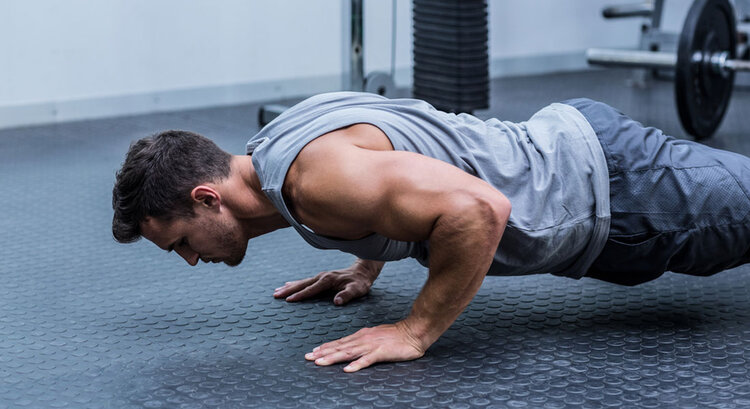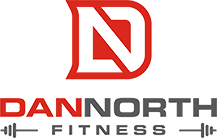
How to Build Muscle and Get Stronger with Bodyweight Workouts
You might be one of the many people who loves lifting weights, but when you’re left without your arsenal of iron weapons, you’re lost.
You ask yourself, “Can I actually build muscle and get stronger with no equipment? Using just bodyweight exercises?”.
In a word, yes.
In a world where misinformation and fad workouts are so easily accessible, particularly within the realms of at-home workouts, you can rest assured that you can continue to build solid muscle while maintaining, or even gaining, incredible levels of strength…without any use of equipment.
How do you do that?
Simple.
You take the fundamental principles of weight training and apply them to your bodyweight workouts to maximize their effect.
PRINCIPLE 1: TENSION AND FORCE
The language your muscles speak is force. By applying force to your muscles, whether it be using dumbbells or performing push-ups, you are effectively creating tension.
Take a heavy set of the bench press for example. Let’s say you’ve got a ton of weight stacked on the barbell and are going for a max set of 5 reps. Every single rep, you’re applying as much force and tension as possible to successfully lift the barbell up from your chest. This stimulates your nervous system and generates an adaptive response in your muscle fibers to break down and grow back bigger and stronger.
Now, what would happen if you took this concept of force and applied it to a push-up? The same thing!
Your muscles and your nervous system recognize when you’re applying as much force as you can throughout a movement and will in turn, offer many of the ongoing benefits you gain from lifting weights without the use of equipment.
In order to create greater tension in your muscles, you can apply these two concepts to your bodyweight workouts:
- Eccentrics: This is the portion of an exercise where your muscles are lengthening under load (ex. lowering a dumbbell during a biceps curl or lowering a barbell during a bench press). Have you ever noticed that you’re stronger when lowering yourself during a push-up? That’s because your body can handle greater amounts of resistance throughout the eccentric phases of exercises. That’s why it’s easier for you to come down from a pull-up or lower yourself into a squat. So, to maximize the effects of eccentric training during your bodyweight exercises, simply slow down the lowering portion of your exercises to create greater time under tension and make your muscles work harder for a longer duration.
- Isometrics: These are exercises where your muscles do not change in size when they’re under load. There are two types of isometrics, yielding and overcoming. Yielding isometrics are when you hold or maintain a static position (like a plank). Overcoming isometrics are exercises where you try to move an immovable object. Both have their own unique benefits. For the purposes of maximizing your bodyweight workouts to build muscle, we’re going to focus on yielding isometrics. Add pauses to your push-ups, squats, lunges, pull-ups…by doing so, you’re creating greater time under tension.
PRINCIPLE 2: VOLUME
Volume plays a huge role when developing strength and building muscle.
What is volume?

Volume refers to the total amount of work you complete over the course of a workout. For example, if you do 3 sets of 10 push-ups, you did a total volume of 30 push-ups.
One of the biggest mistakes you’ll notice in the weight room is going to failure and missing reps. You don’t get stronger by failing reps, you get stronger by completing them.
This concept of “total work” is one of the most essential components to any weightlifting program, but its applicability doesn’t start and end in the weight room. Incorporating volume into your bodyweight workouts can be immensely valuable to making you stronger, bigger, and leaner.
So, to do so effectively, rather than going to failure every workout and doing as many reps as you can…try scaling back and focus on completing full sets for throughout multiple workouts and build your base of strength.
PRINCIPLE 3: CONSISTENCY
This is one those “non-negotiables”.
You see, in order to get better at anything, you need to be consistent. Most of us don’t lack intensity or motivation, we lack the consistency to back it up.
Whether you’re lifting weights or performing bodyweight workouts, your muscles need to consistently be working and introduced to new stresses in order to generate an adaptive response.
PRINCIPLE 4: VARIETY
Many of us fall into the trap of continuously following the same routine for extended periods of time. Rinse, repeat.
Yes, we need consistency in order to see results.
However, that doesn’t mean doing the same thing repeatedly and expecting a different result (insanity).
So, to combat this, you should constantly be introducing new stresses to your muscles. That doesn’t just mean pulling new exercises out of your ass every single workout. You can incorporate variety into your workouts by switching up one, or a combination, of the following factors:
- Tempo: How long it takes you to perform an exercise and how much time under tension you’re creating in your muscles.
- Variation: Every exercise you do comes with a whole whack of different variations. Whether it’s changing the width of your hands during a push-up, or performing reverse lunges instead of forward…the list is endless when it comes to how you can change the variation of an exercise in order to create a different response in your muscles.
- Exercise order: Sometimes all you need to do is simply switch up the order of your exercises. Do you always start and finish with the same exercises? Try reversing them. Do you always finish your workout with some ab work? Try starting with that instead. It doesn’t need to be overly complicated.
- Reps/sets: You might have been guilty of falling into the 3×10 or 5×5 trap where every set is the same in terms of how many reps you’re performing. When you change how many reps/sets you do over the course of a workout, you’re challenging your muscles to work in ways they haven’t before and, as a result, will force them to adapt and grow.
In summary…
- You can build muscle and gain strength using bodyweight exercises.
- Your muscles grow through force application and tension.
- You can apply force and tension to your muscles with bodyweight exercises using:
- Eccentrics
- Isometrics
- Total volume is a key contributor to strength and muscle development.
- Be consistent.
- Use variety.
DO YOU WANT TO GET STRONGER AND LEANER USING A RESULTS-DRIVEN TRAINING SYSTEM?
Join Fortitude Insider today and start your 7-Day Free Trial. Learn more here.




